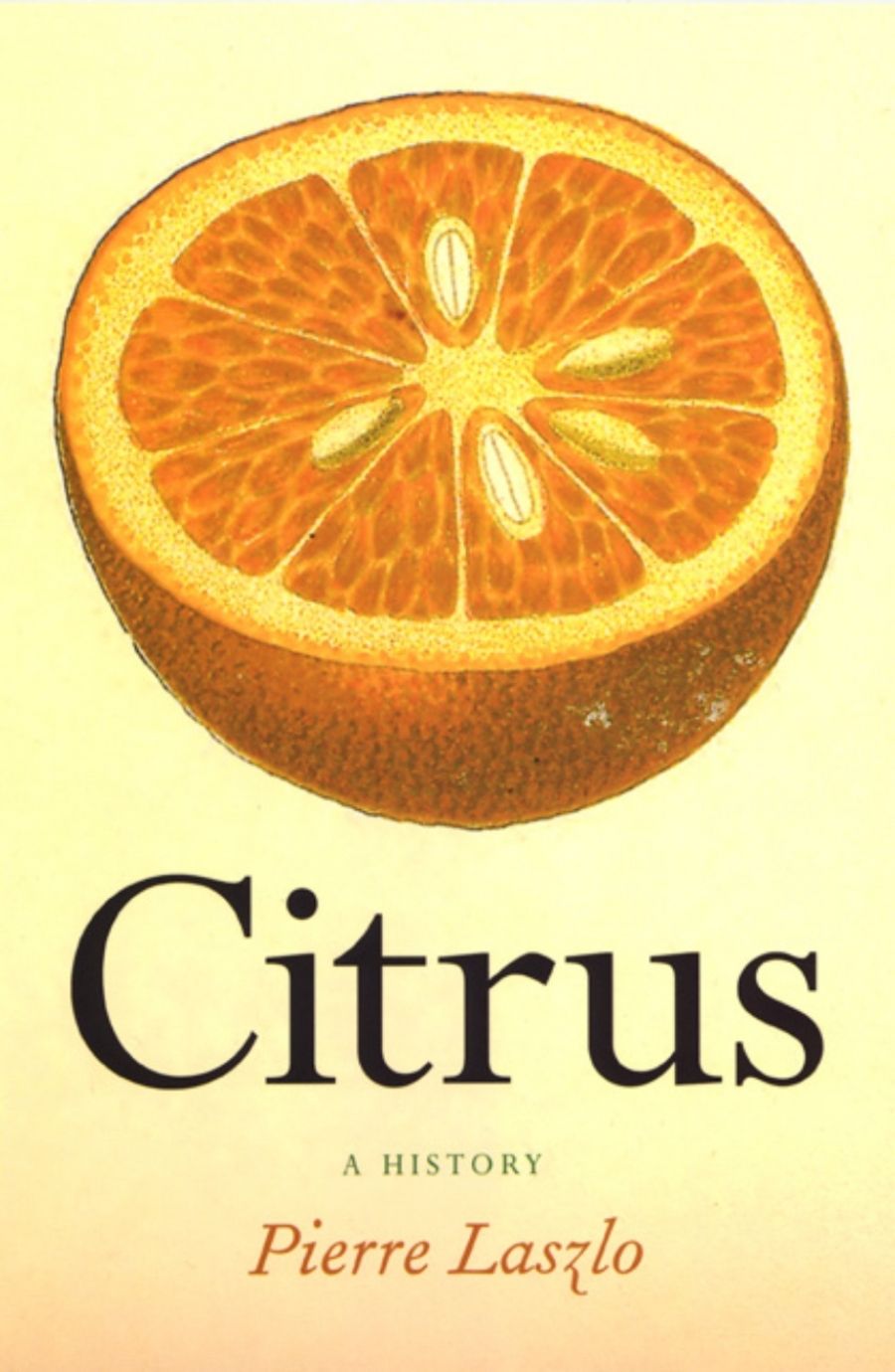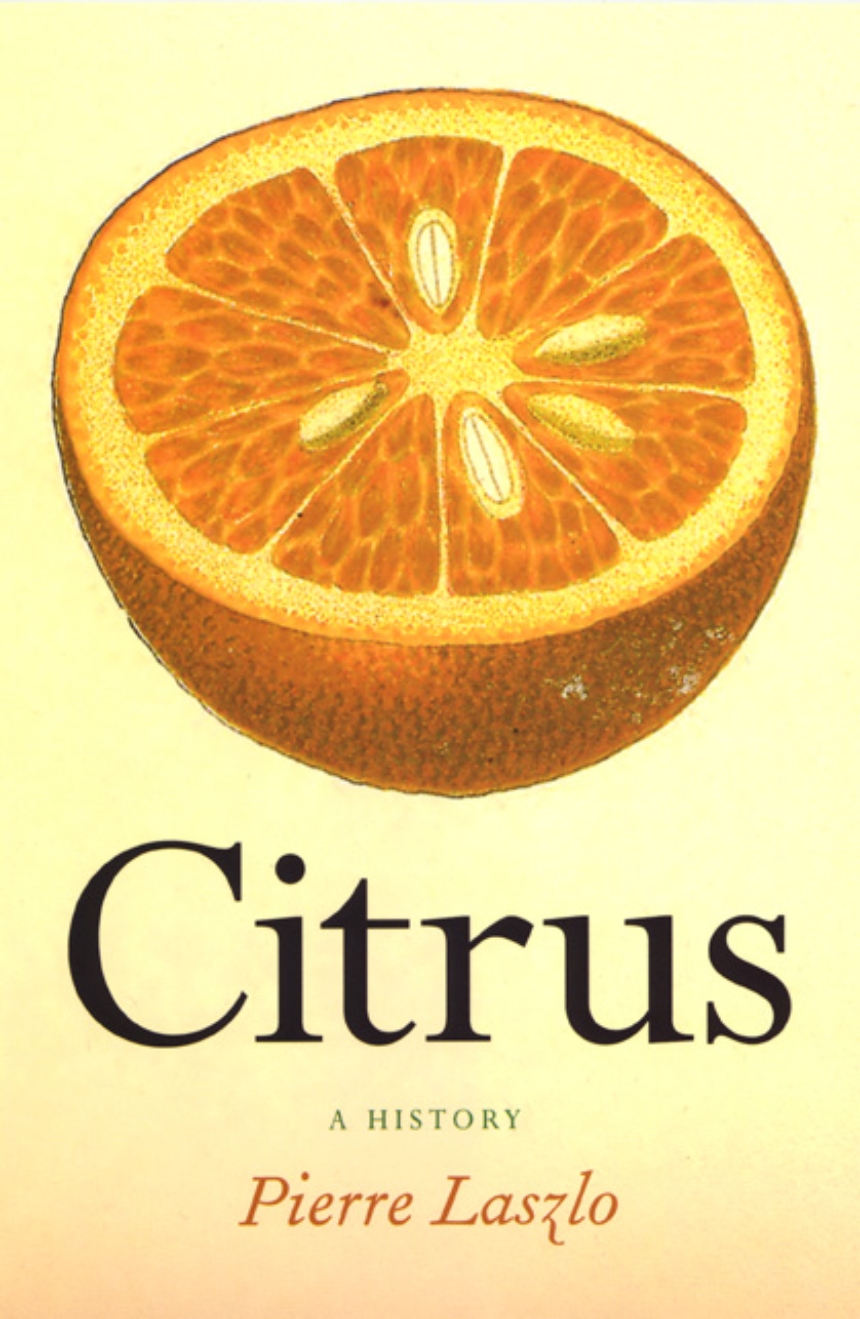
- Free Article: No
- Contents Category: Food
- Review Article: Yes
- Article Title: The botany of desire
- Online Only: No
- Custom Highlight Text:
It is a cruel time to be reading Citrus: A History. A survey by the South Australian Citrus Industry Development Board has predicted a thirty to forty per cent drop in next year’s orange crop. Growers, allowed to use only sixteen per cent of their total irrigation allocation, have bulldozed trees and borrowed money to buy water. A posse stormed Parliament House in Adelaide. The premier subsequently doubled the trickle, but far too late. One grower, who used to divide his water allocation between grapes and oranges, pulled his citrus trees out in order to nurture grapes, which command a higher price.
- Book 1 Title: Citrus
- Book 1 Subtitle: A history
- Book 1 Biblio: University of Chicago Press (Footprint), $37.95 hb, 252 pp
- Book 1 Cover Small (400 x 600):

- Book 1 Cover (800 x 1200):

The commercial history of citrus orchards is inextricably bound up with irrigation. Ten centuries ago, when the Moors invaded the Iberian Peninsula, they brought scholarship and philosophy, algebra and alchemy, and new crops: citrus, olives and grapes. They also brought technical skills and introduced irrigation based on Middle Eastern and Syrian practices. Pierre Laszlo, a semi-retired professor of chemistry, French by birth, academically peripatetic by nature, writes: ‘The Koran repeatedly stresses that Paradise is garden-like. The Andalusian gardens had a model plan: they were divided into four rectangular subplots with rows of trees parallel to an axial water-supplying canal, a design that was imported directly from Persia.’
Although oranges are not the only fruit of the Rutaceae family, they have done extraordinarily well in a scale Michael Pollan invented and which he calls The Botany of Desire. Providing us with such a palatable source of vitamin C (do I need to know that the juice sacs are modified hairs?), amenable to being taken from the East to the West and to the Americas, Pollan would say that they have done as well by us as we by them.
The vast orange groves of Florida and California, and the modern, near-universal shift to associating orange juice with plastic and glass rather than pith and rind, is a long-travelled cultural journey from the orange groves of Ni-Shan in Southern China, described by Han Yen-Chih in 1178. Laszlo opens his history with a fanciful and charming letter of praise to Han for his Orange Record. In an epilogue, he, the chemist, invents a reply from the administrator Han, just as charming and erudite as his own. The centuries-dead Han wishes Laszlo’s book ‘lightness of spirit’. This envelope of generous acknowledgment is the defining tone of Laszlo’s book. There is a lovely sense of mutual delight in research and reading, and in the case of citrus, as with other food histories, taste and association. The shared table is one of shared scholarship, not least because of the personal, sensory relationship we have with food and our often dumb attempts at explaining aroma, taste and texture. It helps to be a chemist, especially in pinning down the flighty olfactory sense.
In modern encyclopèdies such as Citrus, we use the index to find what we might about parts of the whole. There are two entries for ‘neroli oil’. It is the only scent to which I am wholeheartedly attached. I loved it before knowing where it came from, but the fact that it is the essential oil extracted from the freshly picked flowers of the bitter or Seville orange (Citrus Aurantium) is to confirm its seduction. Laszlo describes the presence of bitter orange, neroli and petitgrain (this last is the oil from the twigs and young leaves, and thus far less expensive than neroli) as ‘imparting a fresh, gay, and tonic note’ to eaux de toilette. Without disagreeing, I would suggest that his description does not do justice to the marvellously rich, yet clean, body of the scent. Incidentally, in the spirit of knowing everything there is to know, neroli is named after the Italian princess to whom its discovery is attributed (this from the OED).
Mandarin peel is another citrus aroma to savour. The Chinese use it with genius in the kitchen. There are a few, mostly well-chosen recipes in Citrus. There is also a disappointing block of colour plates, an incoherent mix of the sublime (Zurbarán’s Still life with lemons, oranges, and a rose) with the banal (Key lime pie). Better, the thirty-three pages of Selected Notes is a bibliography combined with extended research notes, which often amount to the real meat of the book and are sometimes delightfully digressive. Laszlo, in his amatory research, is in relaxed mood, at times writing his own memoir along with that of citrus.
In 1966, John McPhee, a staff writer for the New Yorker, published Oranges. It is a terrific book and covers much of the same ground as Laszlo, but it is essentially a report on the commercial orange crops in the United States, with a little digressive history and cultural lore thrown in. Inside Oranges I filed a piece written by Anthony Burgess for the American magazine Gourmet in 1987. Burgess, referring to his ‘horrible little book’, explains that ‘clockwork orange’ is a cockney term for anything bizarre. Laszlo writes about a bizarre festival in Ivrea, a Piedmont village, where the central activity is a pitched battle of oranges. The festival celebrates the return of light at the close of winter. ‘It is also a festival of fertility, helping to ensure a plentiful harvest and the fecundity of women.’
The hectares of Valencias grown in the Riverland do not, for the most part, give Australian citrus groves a good name. Perhaps the best go into plastic, or the crop is distributed over too long a period. One of the most interesting things about citrus is that the fruit matures over winter and is at its best in early spring – hence its historic association with renewal. Blood oranges (I ate my first in Venice in 1974, never forgotten) are now plentiful, but not cheap, in September and into October. They have an entirely different taste to the ubiquitous sweet orange, almost meaty. A local orchard sells Sevilles in the same period. The pectin is high in these because the fruit has been picked the day I buy them in order to turn them into jelly. I love their slightly flattened, very firm shape. A friend grows Poorman’s Oranges, which are large and taste somewhere between a grapefruit and a sweet orange, thus marvellous for juicing. I had not known about them until reading Ruth Park’s novel. On the land next to mine there is an orange tree which is freakishly productive. No one looks after it. The fruit has sugar and acid in perfect balance and they explode with juice. That’s the thing about histories of the edible. They send you forward, after taking you back, to what you might put into your own mouth.
Lastly, may I scold the Australian distributor, Footprint Books? It has stuck a large notice onto the dust jacket of the review copies of Citrus. Ineradicable, it disfigures a rather lovely German print of an orange segment. Do you, like me, take those little labels of origin off oranges, pink grapefruit, lemons and limes (the giant, ancient and fascinating pomelo is free of such pastings), as soon as you are home from the fruit shop? At least these detach without defacing the rind, which I often peel to dry, or to candy, or zest for zest. Zest, that’s the word to describe the seduction of neroli oil.


Comments powered by CComment